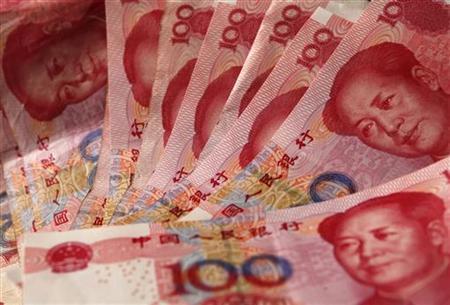The Chinese yuan has been devalued to its lowest rate against the US dollar in almost three years.
China’s central bank said the move was a “one-off depreciation” of 1.9% in a move to make the exchange rate more market-oriented.
It comes in the wake of a string of weak economic data from the world’s second largest economy.
At the weekend, China reported a sharp fall in exports and a slide in producer prices to a near six-year low in July.
Exports fell by 8.3% in July, far worse than expected and the producer price index was down 5.4% from a year earlier.

The midpoint for the yuan is now set at 6.2298 to $1, up from 6.1162 yuan on August 10.
The People’s Bank of China (POBC) manages the rate through the official midpoint, from which trade can rise or fall 2% on any given day.
Until now, it had been determined solely by the central bank itself.
Making the rate more market-based will mean the midpoint will now be based on overnight global market developments and how the currency finished the previous trading day.
The POBC’s move comes amid speculation that China is preparing to widen the trading band for the currency from the current two percent range.
China has long kept tight control of the yuan value on concerns over financial volatility and losing its policy control.
Yet it is also under pressure to reform its currency policy as it pushes to become one of the International Monetary Fund’s “special drawing rights” (SDR) reserve currencies.
These are currencies which IMF members can use to make payments between themselves or to the Fund.
Asian equities outside of China slipped on the news as investors weighed the implications of the surprise move.
